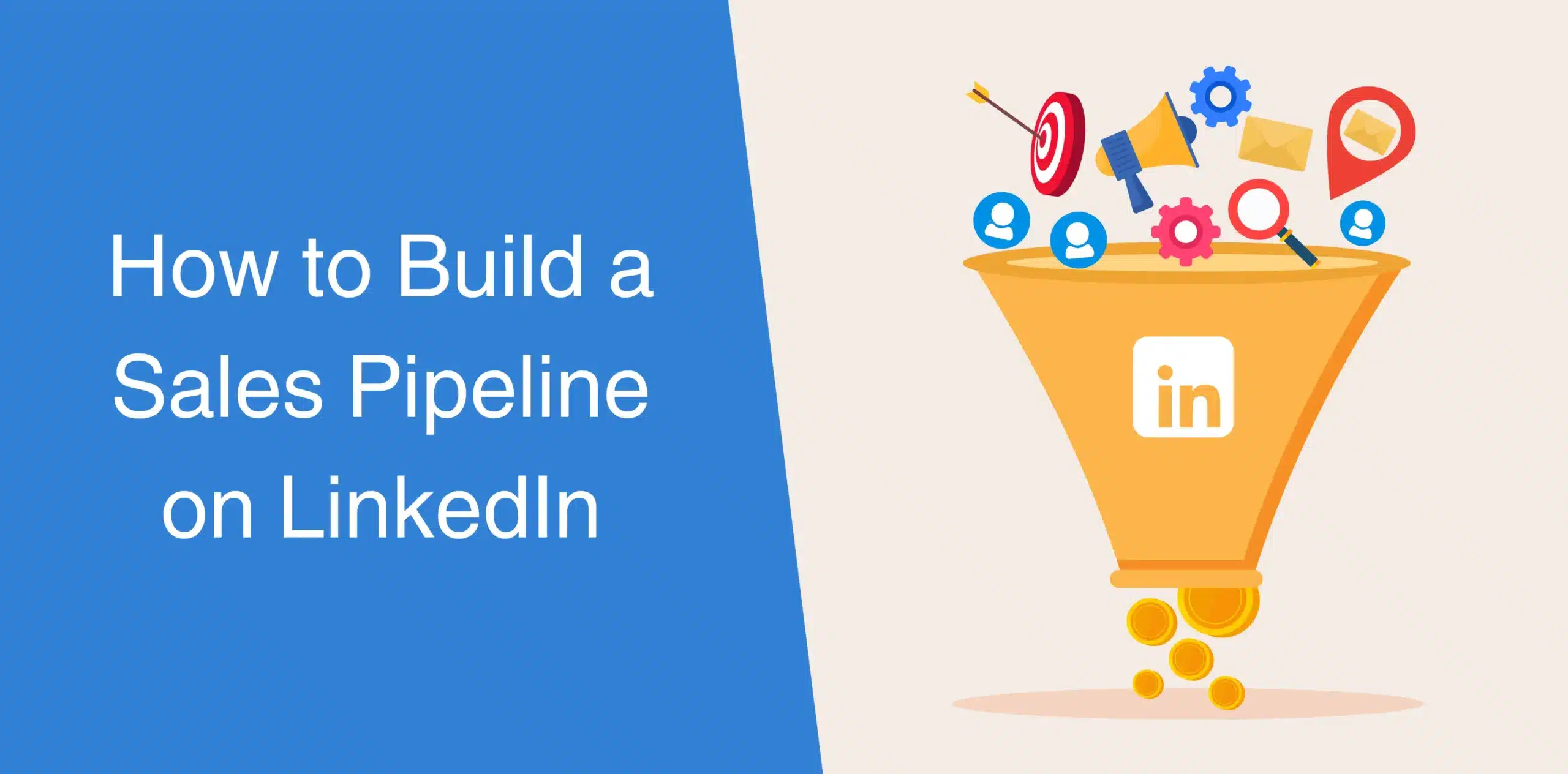Building a sales pipeline on LinkedIn requires strategic planning, a deep understanding of your target audience, and the ability to leverage the platform’s unique features. These features and tools amp up your visibility and keep your audience hooked.
Remember, it’s all about making genuine connections and turning leads into happy customers. So, let’s get cracking on LinkedIn and build your sales pipeline.
What is a Sales Pipeline?
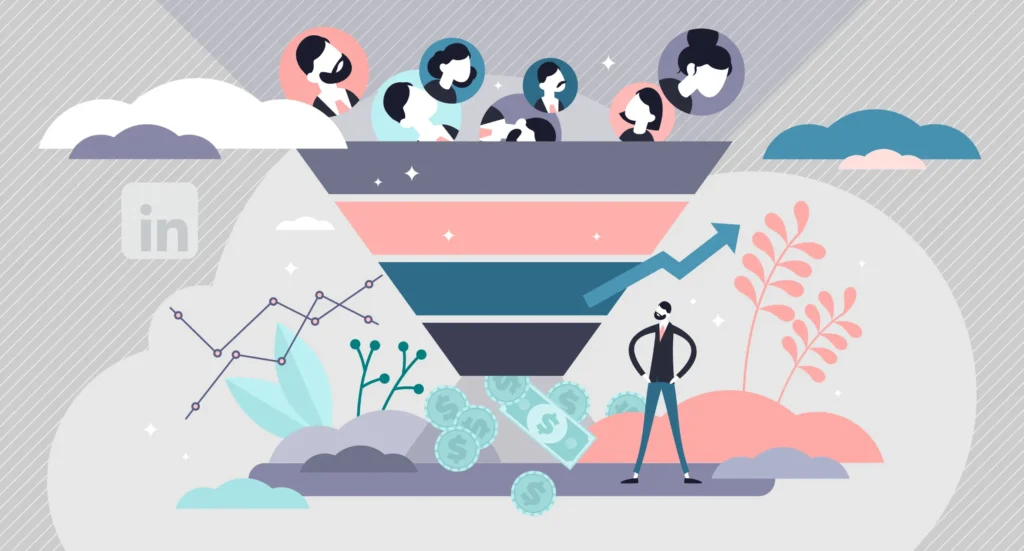
Before we discuss how to build a sales pipeline on LinkedIn, let’s clarify the foundational concept – what exactly is a sales pipeline?
At its core, a sales pipeline is more than a visual representation of deals. Think of it like a GPS for sales – a smart roadmap showing where potential buyers are in their shopping journey.
Sales reps use the sales pipeline as their trusty guide. It gives them a clear plan to tackle the twists and turns of turning leads into happy customers.
Sales Pipeline vs Sales Funnel
It’s vital for sales pros to distinguish between a sales pipeline and a sales funnel. While the latter focuses on the journey of leads, the former hones in on active deals.
The sales funnel is the journey prospects go through before making a purchase. On the flip side, the sales pipeline outlines the strategic steps sales reps take to turn a lead into a paying customer.
Sales Pipeline Stages
The exact stages in your sales pipeline might vary, depending on your industry. However, across the board, most sales pros agree with seven common stages – it’s like an unspoken rule in the B2B sales world.
Below, we’ve explained how to increase sales with the seven stages of a sales pipeline.
1. Lead Generation and Prospecting
The first stage is a make-or-break moment for your success. Your goal here is to identify the best channels to connect with your target audience.
Whether it’s through LinkedIn, email marketing, online ads, or jumping into industry trade shows and business forums, you must think beyond the usual and spread your net wide to reel in as many leads as possible.
This step sets the stage for what comes next, so choose your channels wisely. LinkedIn sales solutions can be your major ally here, as discussed towards the end of this article.
2. Lead Qualification
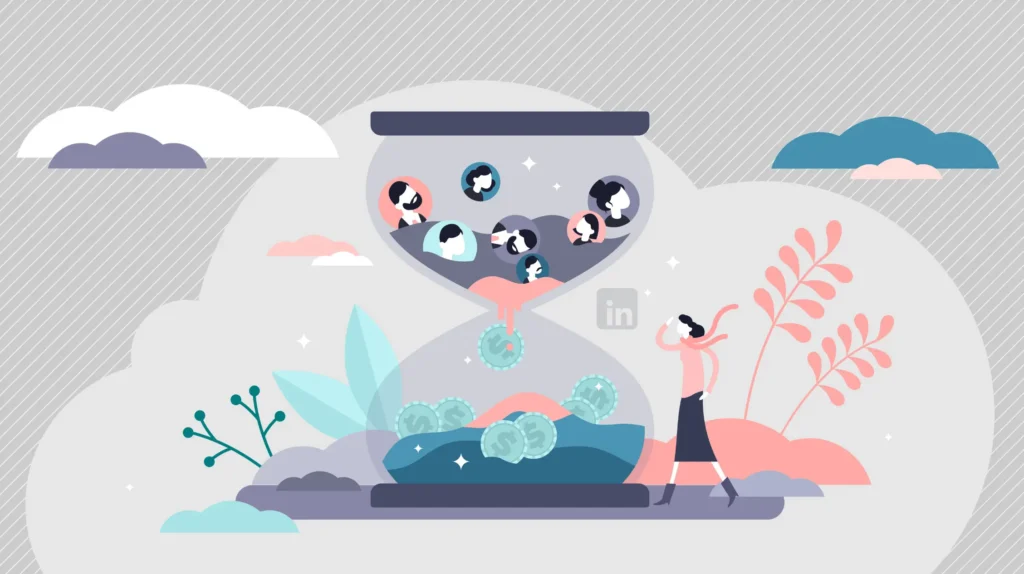
In an ideal world, selling to everyone would be a breeze – a utopia of sorts. But, that’s not how the sales world works. It calls for a more targeted and precise approach. Lead qualification helps you evaluate potential clients to determine whether they are willing and have the money to buy from you.
Lead qualification is not just a numbers game. It’s about quality. During this stage, you need to ask the right questions to see if your leads match up with your business criteria. Plus, sprinkle in some data magic to really qualify them.
Here’s your go-to list:
- What’s their purchasing power?
- Their timeline for buying?
- Why would they want to buy this product or service?
- How familiar are they with your offer?
- How urgent is their need?
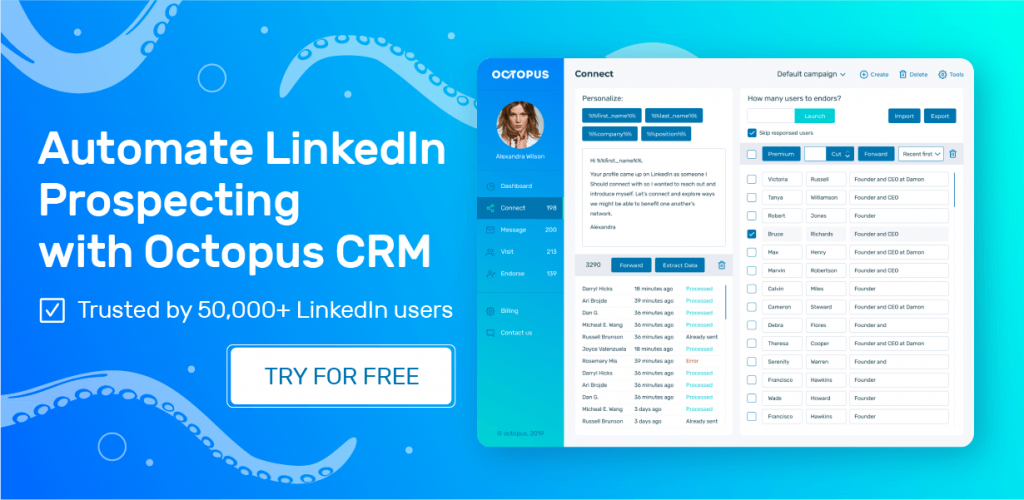
3. Building Connections
Social selling success? It’s all about forging connections and nurturing relationships. On LinkedIn, this is where the magic happens.
During this stage, you interact with your connections’ content, share valuable insights, and actively participate in industry discussions. The key? Personalize your approach for authentic connections that guide prospects seamlessly through the sales pipeline.
It’s about creating genuine relationships that amplify the impact of your social selling on the LinkedIn network.
4. Presenting Solutions
You’ve pinpointed the customer’s problem. Perfect.
Now, let’s roll out your solution. This is your moment to shine. It’s time to showcase how your products or services are the perfect fit for their needs.
Keep in mind that it’s all about making their life simpler and helping them reach their goals. Why is your offer the top choice when it comes to cost, convenience, and all-around value?
Brace yourself for a few bumps in the road at this stage. Always be ready to handle objections like a pro with perfect responses. Also, tailor your pitch so the prospects see why your solution is created specifically for them.
A sales collateral can be your sidekick here. When you have a breakdown of every nitty-gritty detail of your product or service, rest assured all your bases are covered. And here’s a pro tip: streamline your presentation and guide your leads to the finish line with an automated email drip campaign tool.
5. Making a Proposal
Now comes the stage where you roll up your sleeves to seal the deal and snag that customer commitment. You may need to take a final peek at your pricing, iron out any lingering questions, and spend some time sculpting a customized sales proposal.
Here’s the game-changer – your Unique Selling Point (USP). It’s the standout factor that makes you pop! Keep it short and snappy with a catchy tagline that communicates why you’re the best choice.
For instance, let’s say your service has an exceptional efficiency factor. In that case, your Unique Selling Point (USP) could be along the lines of, “Elevate your experience with our revolutionary [Service name] – unlocking a level of efficiency that puts us in a league of our own.”
Or, if your service is all about rapid solutions, consider a USP like, “Accelerate your outcomes with our unparalleled [Service name] – setting the pace that leaves competitors in the dust.”
And don’t forget that your sales proposal must lay out your pricing crystal clear, spelling out any cool extras in your package. If the price is open for negotiation, mention it separately on your price list. This not only leaves room for more discussion but also showcases your flexibility – a trump card in sealing the deal.
6. Negotiating

It’s time to navigate the negotiation table with finesse. Here, the deal’s nitty-gritty details will take center stage – think price, delivery dates, and product specs and benefits. Also, brace yourself for potential pushback on your proposal. This is where your professional flair comes into play.
Here’re some quick tips to navigate the negotiation maze.
- First, actively listen to your customer – it’s all about understanding their viewpoint, not just pitching yours.
- When faced with pushback, offer solutions, not excuses. Explain the ‘why’ behind your stance and suggest alternatives.
- Stay persistent on crucial points but remain flexible, ready to meet them halfway.
Negotiations might feel like a marathon, but if you clinch an agreement that satisfies both sides, it’s not just a closed sale – it’s a win that brings in new, happy customers.
7. Closing the Sale
You’ve gone through the motions – research, prospect selection, relationship building, objection handling – and now, you’re on the brink of closing the sale. Kudos! But hold off on the celebration just yet. There are a few strategic moves to make sure the deal is not just closed but leaves your customer delighted with their purchase.
By this point, trust should be in the bag. Now, it’s time to dial up the persuasion. Get creative. Think about ways to add that extra oomph to seal the deal – consider throwing in a discount or an enticing freebie.
Whether it’s a complimentary gift, a percentage-off voucher, or an exclusive promotion just for them, the goal is to offer irresistible value. It’s about making the deal even sweeter, helping them recognize the immediate and future value of choosing you.
Sales Pipeline Metrics
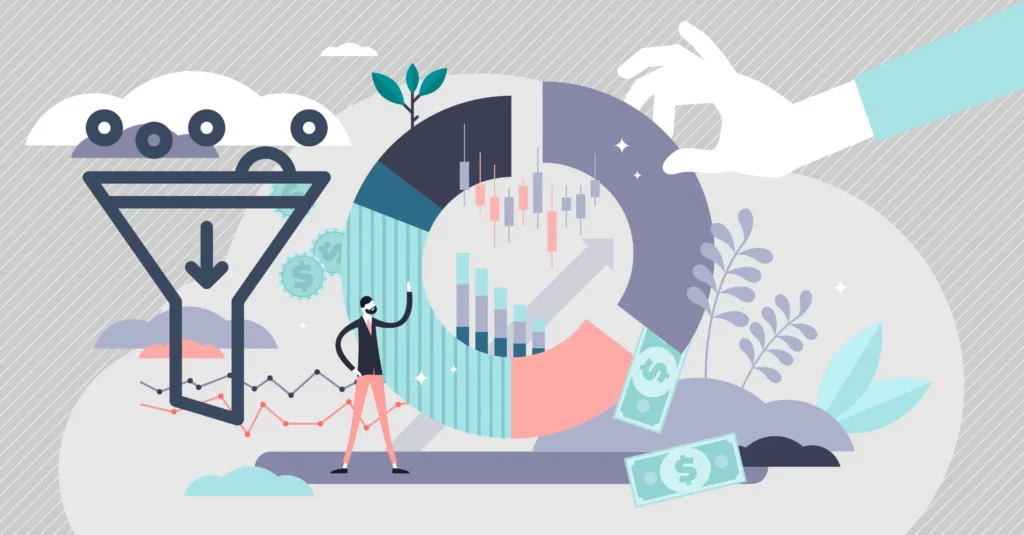
Your sales pipeline metrics offer a quick overview of your team’s performance. Each metric unveils specific details about your organization that can be adjusted and fine-tuned, ensuring your pipeline remains in optimal health.
Here’s a quick rundown of the most important metrics:
1. Number of Qualified Leads: This metric tracks the total inbound and outbound leads. A shortfall in qualified leads signals a need for immediate action, such as increasing marketing efforts or refining lead generation strategies.
2. MQL to SQL Conversion Rate: This measures the conversion of MQLs into SQLs. A significant drop indicates a misalignment between sales and marketing, necessitating collaborative strategies to bridge the gap.
3. Win Rate: Win rate calculates the percentage of qualified leads that result in successful sales. Monitoring changes in win rate over time helps identify areas for improvement in training, sales processes, and sales enablement tools.
4. Average Deal Size: Understanding the average revenue generated per deal is crucial for resource allocation. If your average deal size is low, consider shifting resources to more lucrative segments to maximize revenue.
5. Customer Acquisition Cost: This is the cost of gaining a new customer through sales and marketing. A high CAC may require expense adjustments, while a low CAC indicates efficiency in customer acquisition.
6. Customer Lifetime Value: LTV measures the total value a customer brings over the business relationship. For E-commerce companies, it’s particularly vital, emphasizing the importance of customer retention and recurrent purchases.
7. LTV to CAC Ratio: This ratio assesses the efficiency of customer acquisition. A healthy ratio ensures that the business is acquiring customers at a cost sustainable for long-term profitability.
8. Average Sales Cycle: The time it takes to close a deal is a critical metric. Identifying and addressing deals that exceed the average sales cycle length helps maintain a dynamic and efficient pipeline.
9. Sales by Customer: Breaking down total sales by customer account provides insights into the revenue contribution of different customer segments. This information guides strategic decisions, such as targeting larger enterprises for increased revenue.
10. Sales by Owner: This metric highlights individual sales reps’ performance. Identifying top performers allows for knowledge transfer and improved training processes.
11. Deal Loss Reasons: Analyzing deal loss reasons provides valuable insights that can be used to refine sales strategies and address common objections.
How to Combine Your Sales Pipeline with LinkedIn
LinkedIn presents a treasure trove of features that can help you throughout the B2B sales pipeline.
1. Prospecting
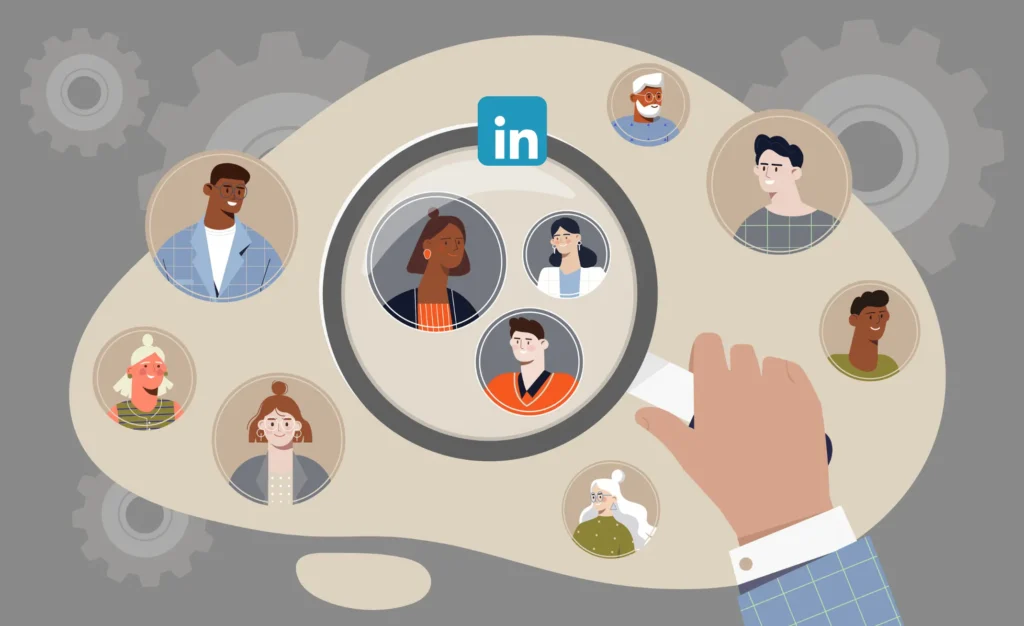
First things first, it is always best to use LinkedIn for sales prospecting. Tap into the platform’s advanced search filters, industry groups, and engagement features to identify and connect with potential leads. Share insightful content to establish credibility and initiate conversations.
2. Lead Qualification
Use LinkedIn’s Advanced Lead Builder and Pipeline Builder features to refine your list based on company size, location, and industry. Engage with prospects through InMail for personalized conversations, gathering information about their professional background and skills.
3. Building Connections
LinkedIn InMail is a powerful solution for starting conversations and building relationships. Craft brief and personalized connection requests, highlighting common interests or industry trends to spark interest.
4. Presenting Solutions
During the presentation stage, use LinkedIn’s content-sharing features to showcase your solutions. Incorporate polls and surveys to gather feedback and tailor your presentation to align with prospect preferences.
5. Negotiating
LinkedIn’s Sales Insights tool provides real-time data on your leads, facilitating proper lead qualification. Use this data to segment your target market accurately and make informed decisions.
6. Closing the Sale
Continue using LinkedIn post-sale to engage with connections. Share success stories and solicit reviews. Utilize LinkedIn analytics to track engagement and adjust your post-sale strategy for maximum impact.
More Tips
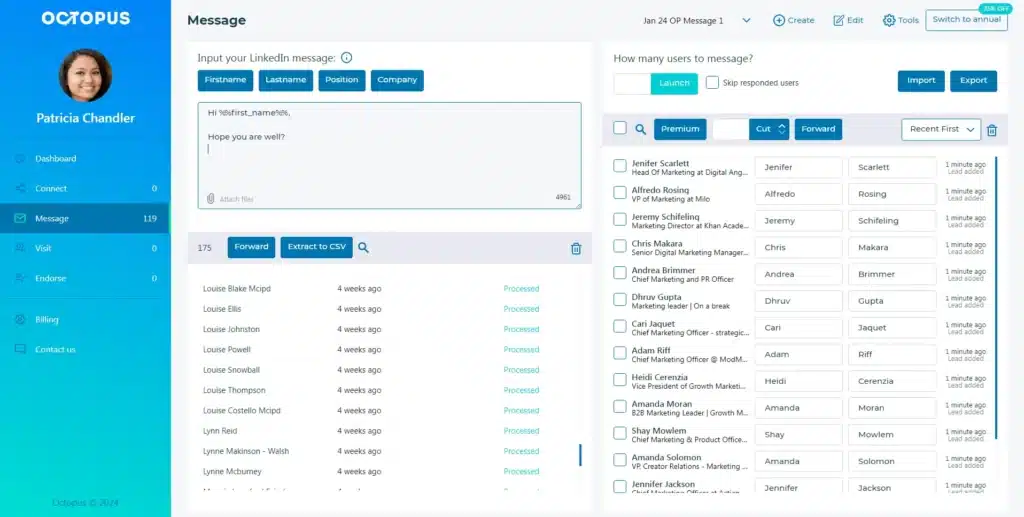
- Consider using LinkedIn Sales Navigator as it offers advanced filters, InMails, CRM integration, and real-time updates on prospects.
- Create Drip campaigns on LinkedIn to streamline the process of presenting solutions. They are invaluable for cold B2B outreach and lead nurturing. These campaigns automate follow-ups, making the buyer’s journey to conversion smoother and more efficient.
- Harness the power of advanced LinkedIn analytics tools to get data-driven insights into sales activities, offering a clear picture of what strategies are working and where adjustments are needed.
Conclusion
Whether you want to boost your sales figures or start a new B2B venture, creating a sales pipeline through LinkedIn is crucial for your success. The process starts with strategic planning and then goes through stages like lead generation, personalized connections, solution presentation, negotiation, and ultimately closing the sale.
In the early stages of generating leads on LinkedIn, the right tools will help you create and manage your sales pipeline effectively. Make sure to use LinkedIn’s advanced tools and features, especially if you’re into social selling and want to reach out to top-level executives. These tools not only make the process smoother but also help enhance your selling strategies.
